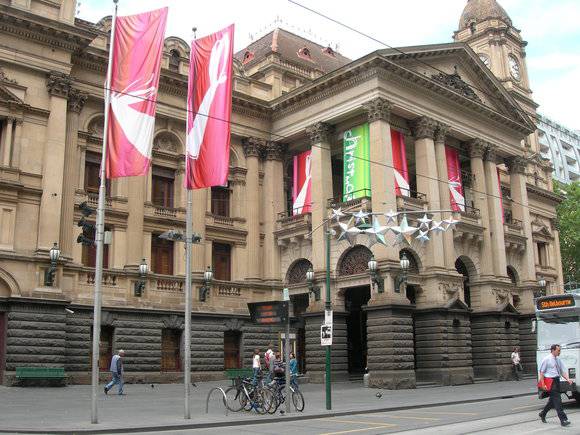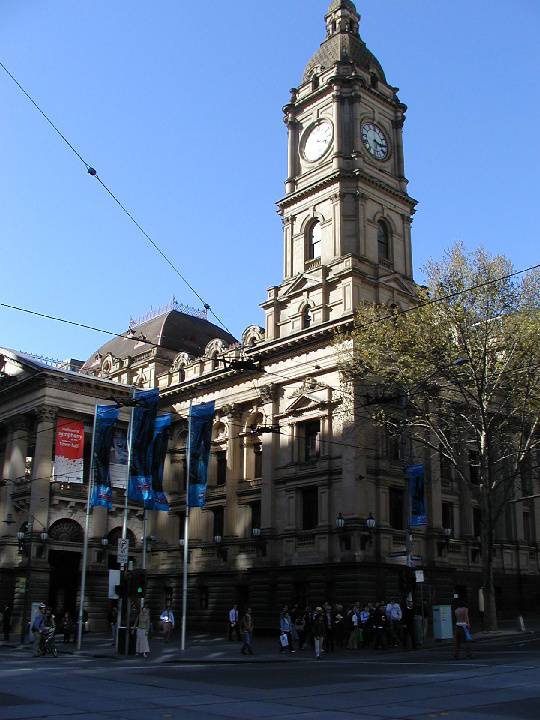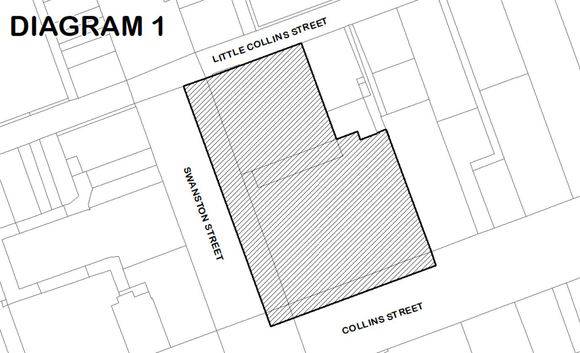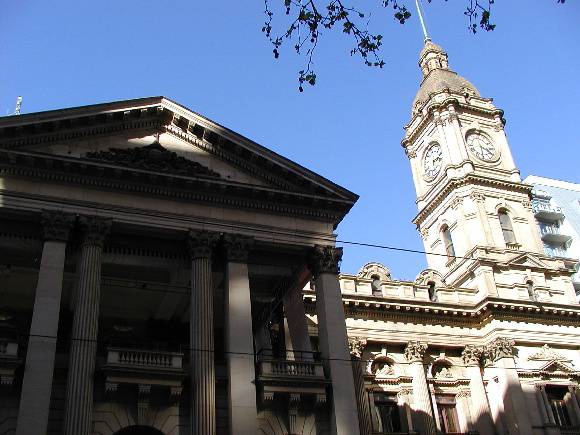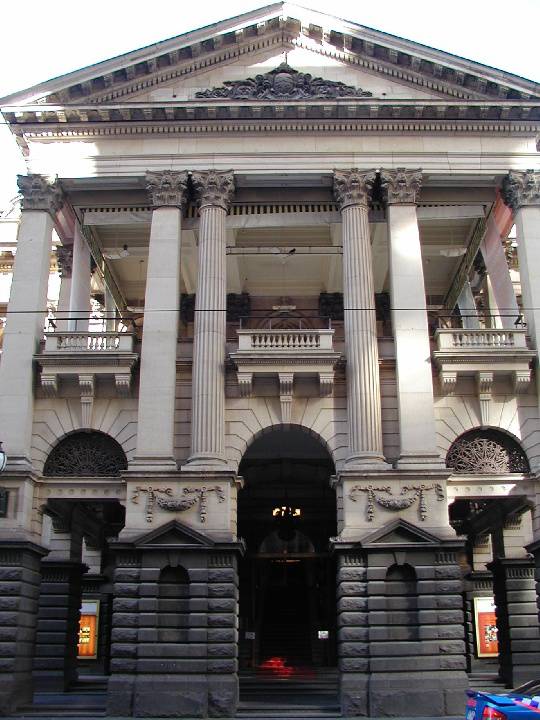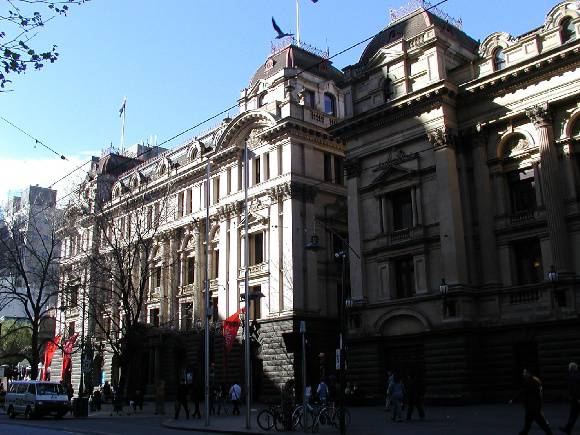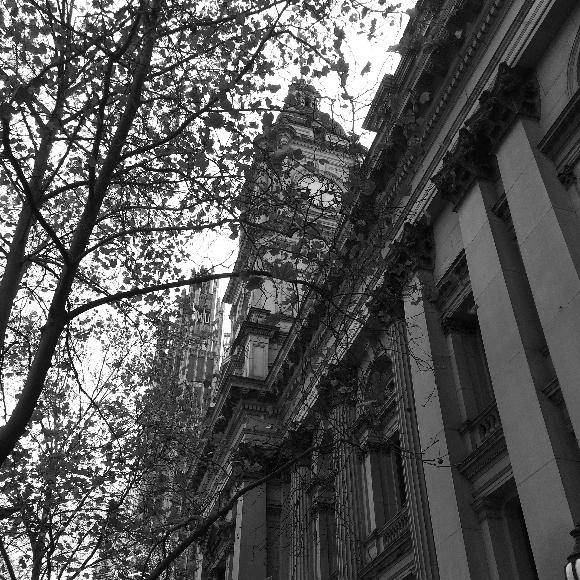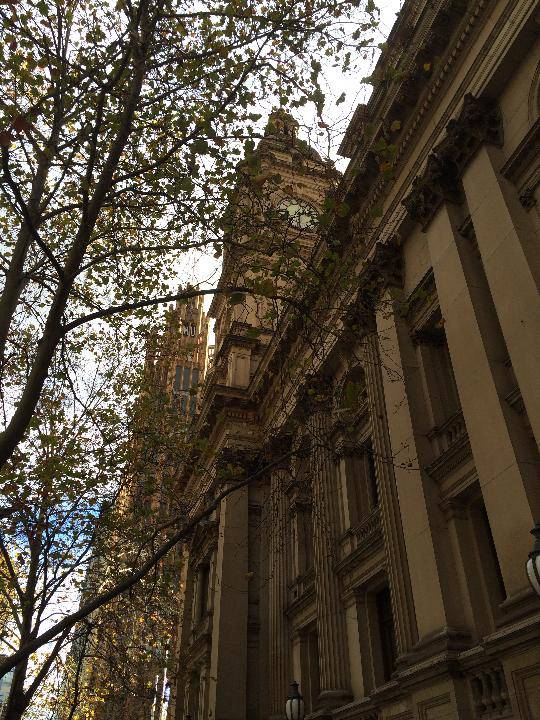| Back to search results » | Back to search page » |
|
MELBOURNE TOWN HALL AND ADMINISTRATION BUILDING
Location90-130 SWANSTON STREET MELBOURNE, MELBOURNE CITY
File Number605608 [ 1 - 5 ]LevelRegistered |
|
Statement of Significance
What is significant?
The Melbourne Town Hall and Administration Building, a five-storey town hall, designed by Reed and Barnes and constructed in 1867 in the French Renaissance style, with various additions dating from the late nineteenth to the early twentieth century. It includes a two-storey portico over the main entrance (1887), an adjoining four-storey administration building (1908-10), a two-storey extension to the Collins Street elevation (1925) and objects integral.
How is it significant?
The Melbourne Town Hall and Administration Building is of historical, architectural, aesthetic and social significance to the State of Victoria. It satisfies the following criterion for inclusion in the VHR:
Criterion A
Importance to the course, or pattern, of Victoria’s cultural history.
Criterion D
Importance in demonstrating the principal characteristics of a class of cultural places and objects
Criterion E
Importance in exhibiting particular aesthetic characteristics.
Criterion F
Importance in demonstrating a high degree of creative or technical achievement at a particular period.
Criterion G
Strong or special association with a particular present-day community or cultural group for social, cultural or spiritual reasons.
Why is it significant?
The Melbourne Town Hall and Administration Building is historically significant as the civic centre of Melbourne since 1867 and as the site of several important meetings in the progress of the Federation movement in Victoria. [Criterion A]
The Melbourne Town Hall and Administration Building is architecturally significant as a distinguished work by the prominent Melbourne architects Reed and Barnes, who designed a number of important Melbourne buildings. It is also significant as a prototype for numerous suburban town halls that were built in the late 1870s and 1880s. [Criterion D]
The Melbourne Town Hall and Administration Building is aesthetically significant for its array of nineteenth and early twentieth century interiors including murals in the main hall by Napier Waller and objects integral to the council chamber. [Criterion E]
The Melbourne Town Hall and Administration Building is technically significant for the Town Hall Grand Organ, a massive and substantially intact pipe organ. Installed in the Melbourne Town Hall in 1929, its complex system of casing, grilles, pipework, and consoles are architecturally integral to the main performance hall. [Criterion F]
The Melbourne Town Hall and Administration Building is technically significant for the Town Hall Grand Organ, a massive and substantially intact pipe organ. Installed in the Melbourne Town Hall in 1929, its complex system of casing, grilles, pipework, and consoles are architecturally integral to the main performance hall. [Criterion F]
The Melbourne Town Hall and Administration Building is socially significant and is valued for a range of cultural and experiential reasons. Since the 1880s, it has been the venue for major civic and entertainment events which are patronised by communities across Victoria. [Criterion G]
Group
Community Facilities
Category
Community Objects (movable)


